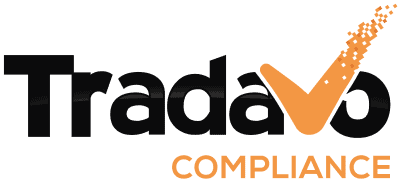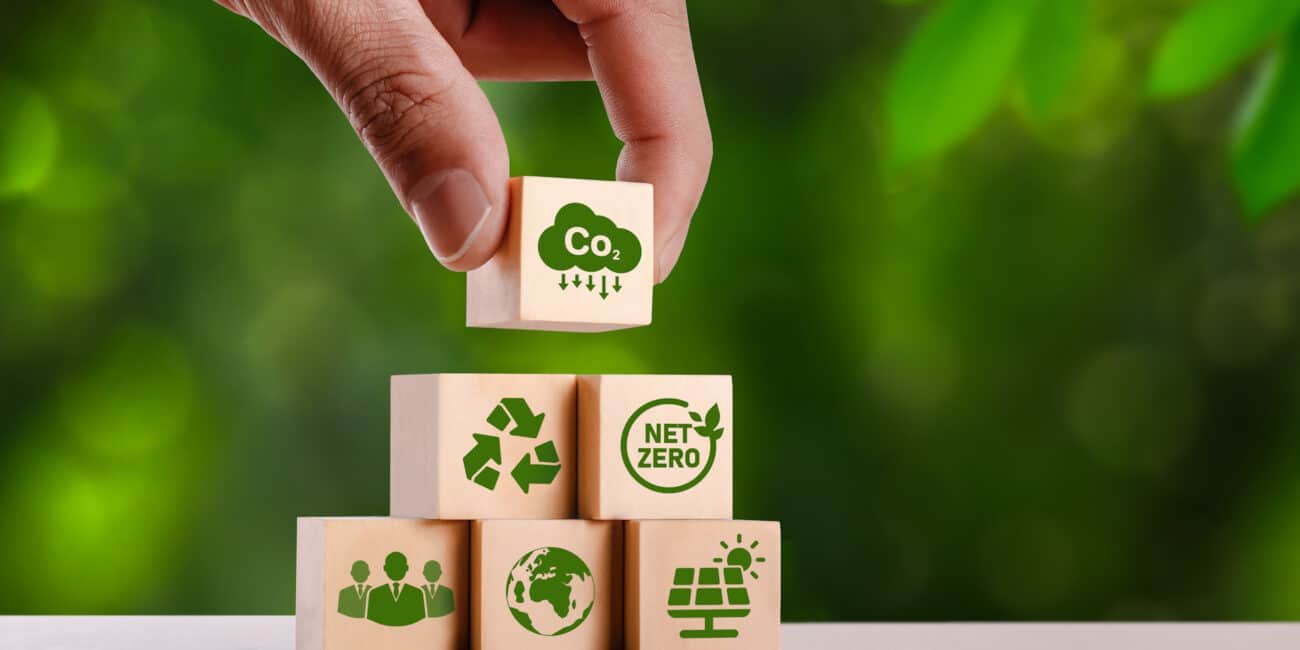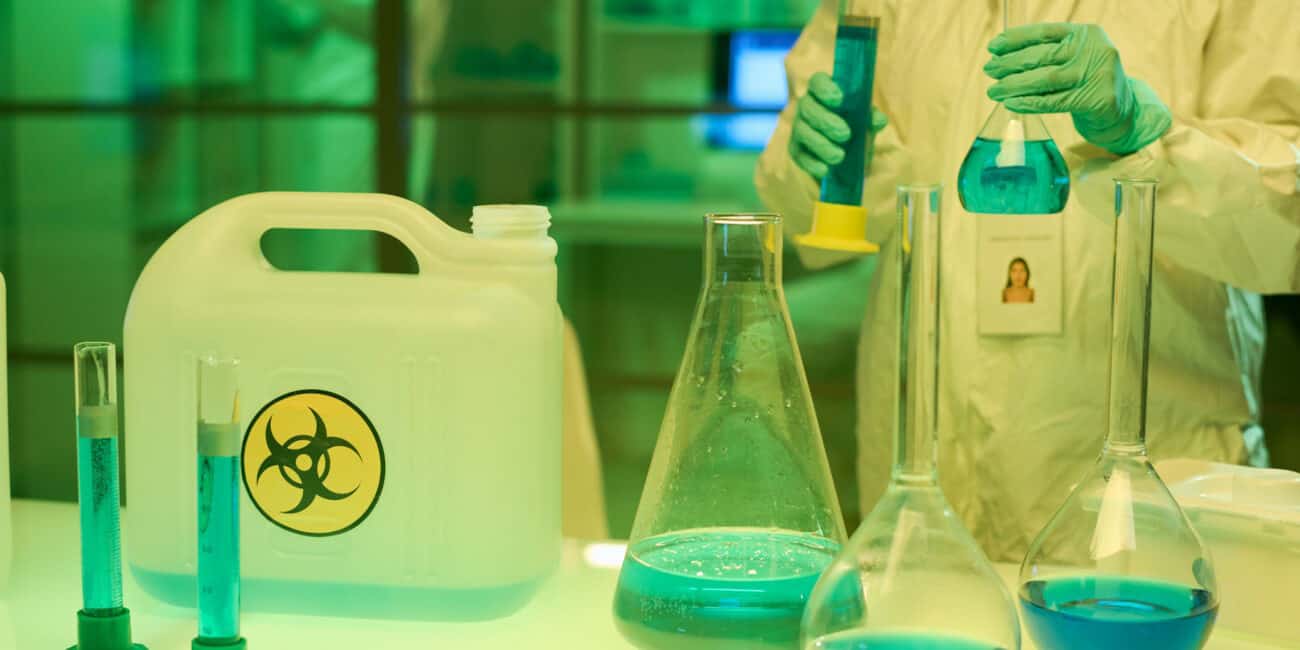Case study – Bath thermometers
In the last articles, we have already dealt in detail with the most diverse topics that are important for Amazon sellers, such as the REACH regulation or the various certifications. Today we want to provide you with practical examples of theoretical knowledge. To do this, we will look at multiple bath thermometers and show which product changes can have (often significant) effects on you as an Amazon seller.
Household thermometer for babies, consisting of plastic materials
Let’s start our Case Study with the “basic” version of a thermometer, similar to the one you can see here. Specifically, this thermometer must be manufactured by the following regulations:
- REACH regulation: Among other things, we inspect the PAH (polycyclic aromatic hydrocarbon) limit compliance.
- POP Regulation (Persistent Organic Pollutants).
In addition, the product must comply with the Product Safety Act (ProdSG) requirements, which implement the European General Product Safety Directive (2001/95/EC). It is also essential to look at all components of the thermometer. For example, since April 2009, the sale of thermometers whose measuring liquid contains mercury has been prohibited!
Thermometer for babies in toy shape, consisting of plastic materials
As with the previous thermometer, the REACH regulation, POP, and the ProdSG must comply. It is also necessary to control the measuring liquid. However, since this thermometer is in the form of a toy, the following also applies:
- Toy Directive (2009/48/EC)
- LFGB (Food and Feed Code)
Even a supposedly small optical change, from a standard thermometer to a shape intended to appeal to children, entails consequences for compliance.
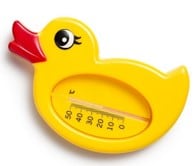
As a result, the thermometer is covered by the Toys Directive. This act regulates all products designed or intended exclusively or non-exclusively for children under 14.
The Toys Directive
Compliance with this Toys Directive imposes several obligations on you:
- Safety testing, such as the stencil test. This is especially necessary if the product is for children under ten months. Toys are tested to see if they can reach the back of the throat to trigger respiratory protection mechanisms if swallowed.
- Warnings
- CE marking
- Safety assessment
- Technical documentation
- Risk assessment
- Declaration of conformity
Among other reasons, these higher compliance standards are necessary because small children often swallow objects containing toxic substances.
If, for example, a product falls within the scope of the Toys Directive under its design, stricter limits apply to the chemical tests. In addition, more REACH parameters must be tested and, of course, complied with.
Phthalates
Phthalates are also plasticizers because they cause products to become soft and pliable. Unfortunately, these plasticizers can dissolve from the plastic. As a result, the European Chemicals Agency has placed some phthalates on the SVHC – Substances of Very High Concern list. Annex XVII of the REACH Regulation also contains phthalates that may result in bans on marketing.
Some phthalates have been shown to have a hormone-like effect, meaning they can influence the hormone system. So, special precautions must be taken, especially with products directed at children by their presentation.
For products covered by the Toys Directive, the REACH Regulation prohibits using 7 phthalates, while “only” 4 phthalates are not permitted for other products. The limit for included phthalates in toy products is 0.1 percent by weight – this limit applies to all 7 phthalates, not to each one! Even certain combinations of the phthalates combined may not exceed this 0.1 weight percent. Otherwise, product compliance is no longer given.
Digital thermometer for babies in toy shape, made of plastic materials
Let’s move on to the third product, the most sophisticated in terms of compliance. As you can see, this is still a thermometer, but it now has a digital temperature display instead of an analog display.
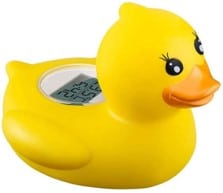
As with the previous product, the following apply to this thermometer:
- REACH regulation
- POP regulation
- LFGB
- Toy Directive (2009/48/EC)
In addition, the following also applies here:
- Electrical toys safety DIN EN 62115
- EMC (2014/30/EU) – Electromagnetic radiation of devices
- RoHS (2011/65/EU) – Restriction of Hazardous Substances in Electrical Equipment
- Battery Directive (requirements regarding the correct disposal of batteries)
- WEEE Directive (Waste Electrical and Electronic Equipment)
In addition to the Toy Directive, which we already looked at in more detail with the previous product, the slight change to a digital display adds many standards that you must comply with your product. You should also be aware that further tests will be required, that you will have to register with the EAR foundation, and that you will also have to take care of the proper disposal of the product.
A product with such a digital component also requires different labeling. In addition, an instruction manual must be included for the end user.
You have seen how even a tiny change in the product design can result in extensive obligations. For example, even a shape appealing to children is enough for the product to be classified as a toy, even if your target audience is adults.
At Tradavo, we have helped countless Amazon Sellers get their products to market safely. However, if all the different guidelines and classifications give you a headache, feel free to contact us for a no-obligation initial consultation.
You need assistance?
It is best to book an appointment directly for a free initial consultation.
Together we will analyze your product, find out which guidelines and limits apply, organize the implementation of missing tests, and ensure that your product has all the requirements for a safe sale.
Who wrote this article?
As an author, Christina fills the blog section of our website with exciting and informative articles, so that our readers can always take care of product compliance in their company in the most well-informed way.
